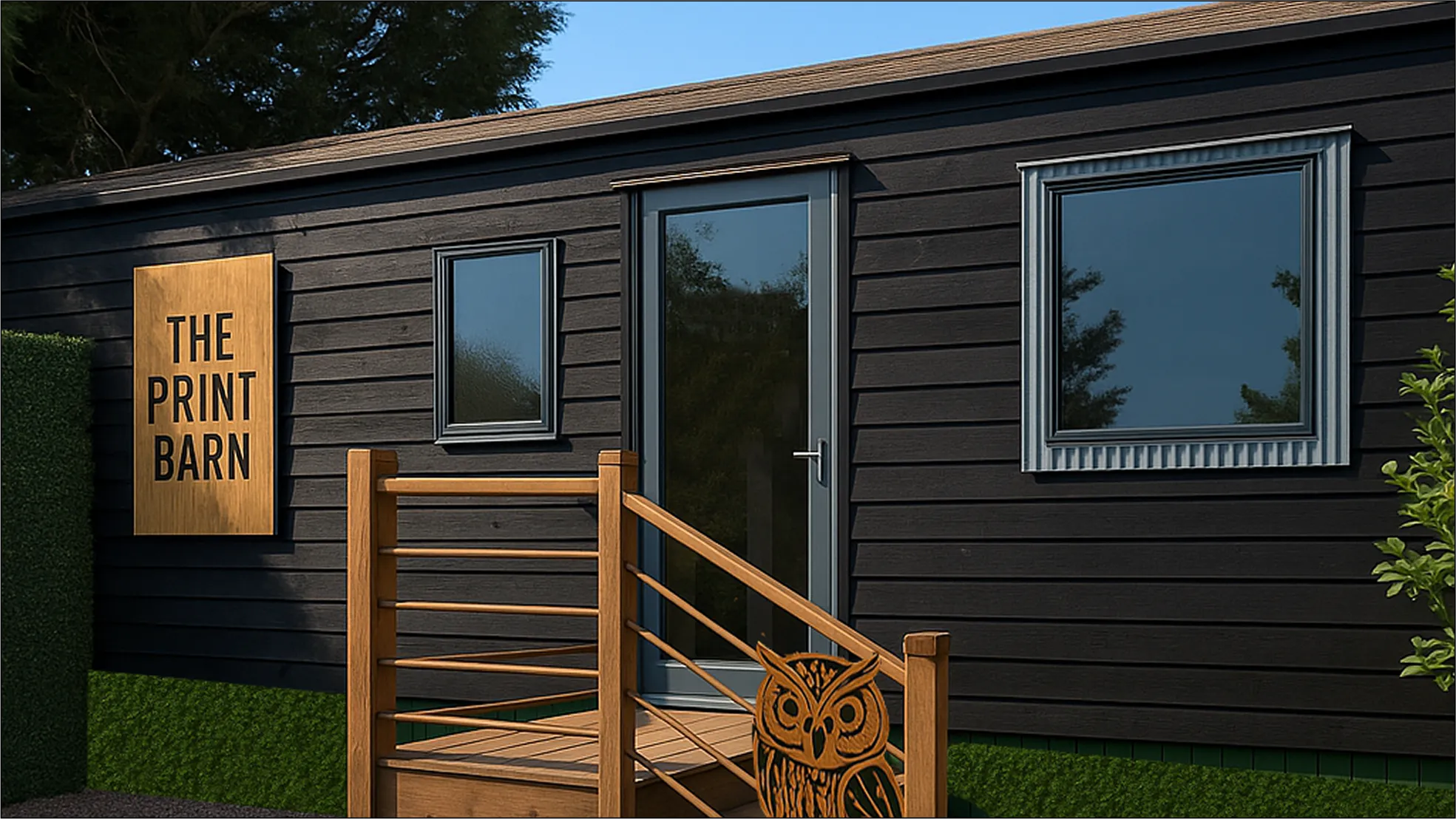
The print versus digital marketing debate has evolved significantly in 2025, with new data revealing that the most successful UK businesses aren't choosing between these channels—they're strategically combining them. Recent industry research shows that integrated campaigns using both print and digital marketing achieve 400% higher response rates than single-channel approaches.
The Current Marketing Landscape
Digital marketing dominance seemed inevitable just a few years ago, but 2025 data tells a different story. UK consumers are experiencing digital fatigue, with 73% reporting feeling overwhelmed by online advertising. This shift has created renewed opportunities for print marketing to capture attention and drive engagement.
Print marketing now benefits from scarcity value. With fewer businesses using print materials, those that do stand out more prominently. Local businesses across the Isle of Sheppey are discovering that well-designed print materials create memorable impressions that digital advertising struggles to match.
The tangible nature of print creates psychological advantages. Neuroscience research shows that physical materials activate different brain regions than digital content, creating stronger emotional connections and better recall. This "haptic advantage" makes print particularly effective for building brand trust and loyalty.
Response Rates and Engagement Metrics
Direct mail consistently outperforms digital marketing in response rates. Current UK data shows direct mail achieving 4.4% response rates compared to 0.12% for email marketing. This dramatic difference reflects consumers' selective attention in crowded digital environments.
Print materials enjoy longer engagement times. The average person spends 43 seconds reading direct mail pieces compared to 15 seconds viewing digital ads. This extended engagement provides more opportunities to communicate complex messages and build brand relationships.
Trust metrics favour print marketing significantly. Studies indicate that 82% of UK consumers trust print advertisements more than digital ads. This trust translates to higher conversion rates and stronger brand loyalty over time.
Cost Analysis and ROI Considerations
Print marketing often delivers superior return on investment when properly executed. Whilst initial costs may be higher, the extended lifespan of print materials spreads costs over longer periods. A well-designed brochure might generate leads for months, whilst digital ads require continuous spending.
Targeting precision affects cost efficiency. Print allows demographic targeting through distribution methods—geographic areas, business types, or income levels. This precision reduces waste and improves cost per acquisition compared to broad digital advertising.
Creative development costs often favour print. Once created, print materials can be used repeatedly without additional creative fees. Digital campaigns typically require constant content refresh to maintain effectiveness, increasing ongoing costs.
Audience Preferences and Demographics
Age significantly influences channel preferences. UK consumers over 50 respond 34% better to print marketing than digital alternatives. This demographic often possesses higher disposable income and stronger brand loyalty, making them valuable targets for many businesses.
Industry sectors show varying preferences. Professional services, healthcare, and financial sectors see stronger print response rates. Creative industries and technology companies often find digital channels more effective. Understanding your industry's preferences guides optimal channel selection.
Geographic factors influence effectiveness. Rural areas often show stronger print response rates due to lower digital marketing saturation. Urban areas may favour digital channels but can benefit from print's novelty value when done exceptionally well.
The Power of Integrated Campaigns
The most successful 2025 marketing campaigns combine print and digital elements strategically. QR codes on print materials bridge physical and digital experiences, allowing precise tracking whilst maintaining print's tangible impact.
Sequential messaging creates powerful narratives. Print materials can introduce concepts that digital follow-up expands upon. This approach leverages print's trust-building capabilities with digital's interactive features and detailed analytics.
Cross-channel reinforcement improves recall significantly. Consumers exposed to both print and digital versions of messages show 73% better brand recall than those seeing single-channel campaigns. This reinforcement effect justifies multi-channel investments.
Measuring Success in 2025
Attribution models have evolved to better track print marketing effectiveness. Unique phone numbers, specific landing pages, and promotional codes enable precise measurement of print campaign performance. These tools eliminate the traditional "measurement disadvantage" of print marketing.
Customer journey mapping reveals print's role in complex sales processes. Many customers encounter print materials early in their journey, building awareness and trust that digital channels later convert. Understanding this interplay optimises budget allocation across channels.
Lifetime value metrics often favour print-acquired customers. These customers typically demonstrate higher loyalty and spending patterns, making print marketing's higher acquisition costs worthwhile for businesses focused on long-term growth.
Technology Integration Opportunities
Augmented reality is revolutionising print marketing possibilities. AR-enabled print materials create interactive experiences that combine physical and digital elements. This technology bridges the gap between print's tangible appeal and digital's interactive capabilities.
Near-field communication (NFC) technology enables instant digital connections from print materials. Business cards, brochures, and signage can trigger specific digital experiences, creating seamless transitions between channels whilst maintaining print's professional impact.
Variable data printing allows mass customisation previously impossible. Each printed piece can contain personalised content, combining print's trust advantage with digital marketing's personalisation capabilities.
Environmental and Sustainability Considerations
Sustainable printing practices address environmental concerns whilst maintaining effectiveness. FSC-certified papers and vegetable-based inks reduce environmental impact without compromising quality. UK consumers increasingly value environmental responsibility, making sustainable print marketing a competitive advantage.
Digital marketing's environmental impact often exceeds sustainable print alternatives. Data centres, device manufacturing, and energy consumption for digital advertising create significant carbon footprints. Sustainable print marketing can actually be more environmentally responsible than digital alternatives.
Longevity considerations favour print for certain applications. High-quality print materials last for years, providing ongoing value without additional environmental impact. Digital campaigns require constant energy consumption throughout their lifespan.
Future Trends and Predictions
Print marketing is experiencing renaissance driven by digital fatigue and authenticity desires. Young consumers, paradoxically, show increasing appreciation for print's tangible qualities. This trend suggests print marketing will remain relevant for diverse age groups.
Hybrid technologies will continue evolving, creating new opportunities for print-digital integration. Smart papers, interactive inks, and embedded sensors will blur boundaries between print and digital experiences.
Personalisation capabilities will expand, making print marketing more targeted and relevant. Advanced data analytics will enable precise audience segmentation and message customisation, improving print marketing effectiveness whilst maintaining its trust advantages.
Strategic Recommendations
Successful 2025 marketing requires channel agnostic thinking. Rather than choosing print or digital, focus on optimal channel combinations for specific objectives. Use print for trust-building and brand awareness, digital for interaction and conversion tracking.
Budget allocation should reflect customer journey complexity. Businesses with longer sales cycles benefit from print's relationship-building capabilities. Companies seeking immediate conversions might emphasise digital channels whilst using print for long-term brand building.
Quality remains paramount for both channels. Exceptional print materials create lasting impressions, whilst mediocre digital content gets ignored. Invest in high-quality creative development regardless of chosen channels.
The print versus digital debate misses the point in 2025. Smart UK businesses are leveraging both channels' unique strengths to create comprehensive marketing strategies that engage customers effectively. At The Print Barn, we help Isle of Sheppey businesses navigate these choices, creating print materials that complement digital efforts and drive measurable results.
What our lovely customers say...
We add that personal touch to each and every order
Why Choose The Print Barn for Your Needs
At The Print Barn, we pride ourselves on our fast turnaround times, ensuring you receive your custom garments when you need them. With no minimum order requirements, we cater to both small and large requests, making it easy for everyone to access high-quality printed and embroidered items. As a UK-based company, we offer friendly support and a personal touch to every order.



